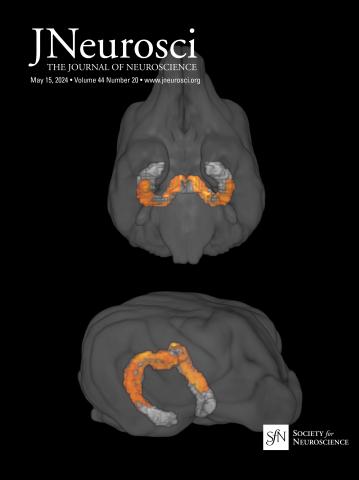Optogenetic stimulation of novel TPH2-Cre rats advances insight into serotonin's role in locomotion, reinforcement, and compulsivity.
IF 4.4
2区 医学
Q1 NEUROSCIENCES
引用次数: 0
Abstract
Serotonin critically modulates the activity of many brain networks, including circuits that control motivation and responses to rewarding and aversive stimuli. Furthermore, the serotonin system is targeted by the first line of pharmacological treatment for several psychiatric disorders, such as obsessive-compulsive disorder. However, understanding the behavioral function of serotonin is hampered by methodological limitations: the (brainstem) location of serotonergic neuron cell bodies is difficult to access, their innervation of the brain is diffuse, and they release serotonin in relatively low concentrations. Here, we advance this effort by developing a novel Tph2-Cre rat line, which we utilized to study serotonin in the context of motor, compulsive, and reinforced behaviors using optogenetics in both male and female rats. Specificity and sensitivity of Cre-recombinase expression and Cre-dependent processes was validated immunohistochemically, and optogenetic induction of in-vivo serotonin release was validated with fast-scan cyclic voltammetry. Optogenetic stimulation of serotonin neurons in the dorsal raphe nucleus did not initiate locomotion or alter aversion-induced locomotion, nor did it elicit (real-time) place preference, and had no measurable effect on compulsive behavior in the schedule-induced polydipsia task. In contrast, this optogenetic stimulation moderately sustained ongoing spontaneous locomotion and robustly reinforced operant lever-pressing for self-stimulation of serotonin neurons, which was exacerbated by food restriction. Together, this work both introduces a novel rat Cre-line to study serotonin, and advances our understanding of serotonin's behavioral functions. Complementing previous findings, we find that brain-wide serotonin release has an overall relatively mild effect on behavior, which manifested only in the absence of natural reinforcers and was modulated by physiological state.Significance Statement Although serotonin is produced by only a very small number of neurons, it modulates the activity of almost all brain networks and is implicated in numerous behavioral functions and many psychiatric disorders. However, our comprehension of serotonin function and dysfunction is hampered by methodological limitations, which can be improved by our novel Tph2-Cre rat line. We investigated general behavioral processes to principally understand serotonergic involvement in the many functions it has been implicated in. Complementing and furthering previous findings and consistent with its low concentrations found ubiquitously throughout the brain, we find that brain-wide serotonin release has mild effects on behavior, which are modulated by hunger and manifest only in the absence of food reward in the experimental environment.求助全文
约1分钟内获得全文
求助全文
来源期刊

Journal of Neuroscience
医学-神经科学
CiteScore
9.30
自引率
3.80%
发文量
1164
审稿时长
12 months
期刊介绍:
JNeurosci (ISSN 0270-6474) is an official journal of the Society for Neuroscience. It is published weekly by the Society, fifty weeks a year, one volume a year. JNeurosci publishes papers on a broad range of topics of general interest to those working on the nervous system. Authors now have an Open Choice option for their published articles
 求助内容:
求助内容: 应助结果提醒方式:
应助结果提醒方式:


